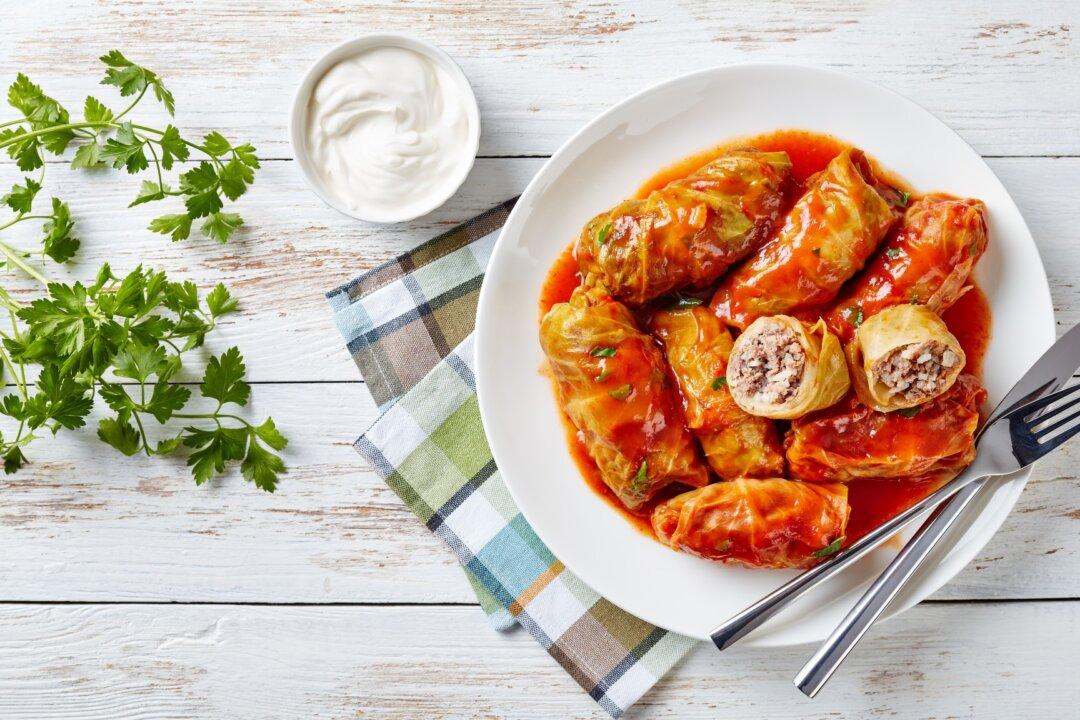Roll out the special characters for another great Polish dish: gołąbki. You will hear it as go-LAHB-kee, but in Polish, that unusual (for us) “l” makes the word sound like ga-WOMP-kee.
While the literal translation means “little doves,” these are stuffed cabbage rolls (the size of little doves, but likely better tasting!). As I wrote in a previous article about Czech kolache, in Texas, a nontraditional sausage-filled “kolache” is what many Americans could call a “pig in a blanket.” In northern Wisconsin, a pig in a blanket is one of these cabbage rolls. If I asked my Slovak grandmother, she’d tell me they are halupki. Hey, to each their own! (I may take to calling these Polish enchiladas.)





